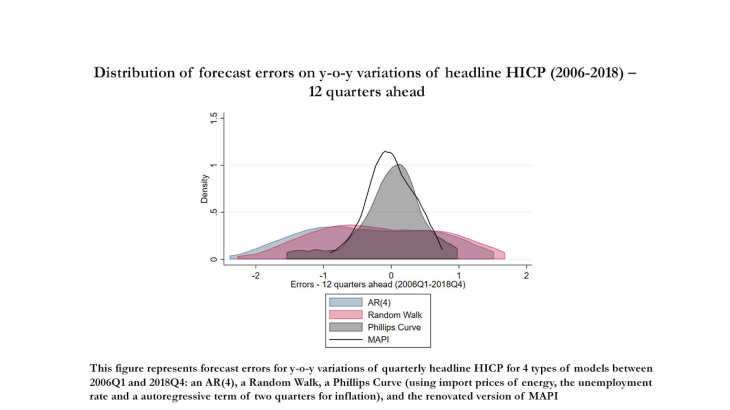Working Paper Series no. 869. In this paper, we present an updated version of the reference model used at Banque de France to forecast inflation: MAPI (Model for Analysis and Projection of Inflation). While the conceptual framework of the model remains very close to its initial version, our update takes stock of three different factors. First, since the previous version of the model, the underlying nomenclature used at the European level (ECOICOP) to define some of the main aggregates was changed, therefore requiring a careful review of the relevance of initial equations. Second, in the context of the modification in 2019 of the main semi-structural macroeconomic model used for the macroeconomic projections at Banque de France (FR-BDF), it aims at harmonizing the iterations between MAPI and FR-BDF. Finally, large variations in the wage variables in the midst of the sanitary measures related to the Covid-19 pandemics pushed us to use different concepts of wage and compensation variables. At the crossroads of these considerations, we update the model extending the estimation window, correcting specifications and input variables whenever relevant. The resulting model is an up-to-date, simplified and more parsimonious version of the initial model, entailing a stronger harmonization with the central macroeconomic model FR-BDF. It still involves significant pass-through of wages, oil and exchange rate to HICP.
